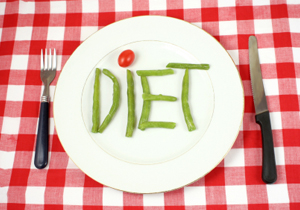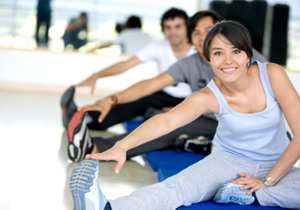Women and Heart Disease
Monday, 31 January 2011
 This year The American Heart Association presents "Go Red for Women" a movement providing information to women about cardiovascular disease.
This year The American Heart Association presents "Go Red for Women" a movement providing information to women about cardiovascular disease. Traditionally, we think about men being the primary victims of heart disease, but each year, it claims the lives of hundreds of thousands of women. The older you are, the more likely it is that you will get heart disease. But healthy living at any age is the foundation for disease-free later years.
While some people are genetically predisposed to heart disease; high cholesterol, high blood pressure, obesity, diabetes, tobacco use and second hand smoke are associated risk factors for this condition which can be reduced or controlled. No matter what your age, there are ways that you can significantly reduce your risk for heart disease.
In your 30s, life is a balancing act between family, work and yourself. But you're not a kid anymore. Now is the time to build heart-healthy habits. If you avoid the conditions that put you at risk for heart disease until you turn 50, you may never develop heart disease. Check your family history, quit smoking, and avoid gaining weight.
In your 40s, it becomes even more important to make healthy choices. No matter what life brings, it's important to stay happy and healthy so you can enjoy the years to come. Make healthy lifestyle choices now that will benefit you in the long run. Eat well, exercise, watch your weight, and get a checkup.
In your 50s, your body is changing and that affects your heart. Check with your doctor to see if your numbers are acceptable for cholesterol, triglycerides, blood pressure, fasting glucose, and body mass index. To get your estimated heart risk, go to www.goredforwomen.org.
In your 60s, heart disease is more likely, but you have the power to prevent it. Smoking is the most preventable cause of death in the United States. It's never too late to quit so...Stop Smoking Today! Keep an eye on body weight, continue to exercise, and have your blood pressure checked. For more heart-healthy tips, go to www.bodyfocus.me
Consider taking vitamins and other supplements. Your doctor can help you determine which ones can be of benefit to you. Vitamin E is believed to reduce the risk of a heart attack, as are supplements such as CoQ10 and L-carnitine.
Because so many of today’s typical diets lack fundamental nutritional elements, supplements such as Vitamin E, CoQ10 and L-carnitine, just to name a few, can add to one’s ability to control the risk factors of heart disease.


 There's an epidemic that is circulating the globe and it is one that seems to be taking all of us by surprise. I'm talking about the epidemic of obesity!
There's an epidemic that is circulating the globe and it is one that seems to be taking all of us by surprise. I'm talking about the epidemic of obesity!  Stretch out your muscles each and everyday to get them ready for action and reduce back pain.
Stretch out your muscles each and everyday to get them ready for action and reduce back pain.
 Make 2011 Your Healthiest Year Yet With These Exercise Tips!
Make 2011 Your Healthiest Year Yet With These Exercise Tips!